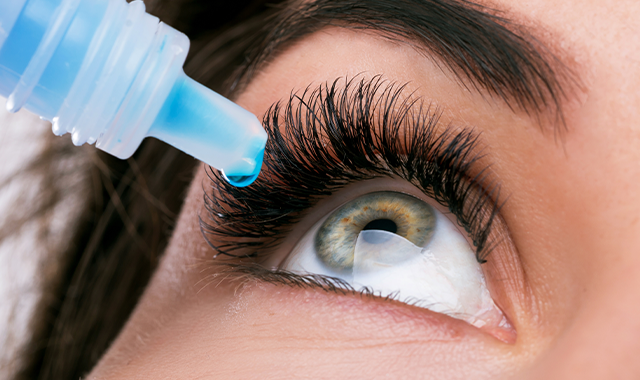Bausch + Lomb Exec Discusses Novel Dry Eye Disease Treatment
Miebo is the first and only prescription eye drop approved for dry eye disease (DED) that directly targets tear evaporation.
A leading cause of DED is excessive tear evaporation, which due to an altered tear lipid layer, is often associated with the clinical signs of Meibomian gland dysfunction (MGD).

The FDA recently granted approval of Bausch + Lomb’s Miebo (perfluorohexyloctane ophthalmic solution), the first and only FDA-approved treatment for dry eye disease (DED) that directly targets tear evaporation.
DED affects millions of Americans and is one of the most common ocular surface disorders. A leading cause of DED is excessive tear evaporation, which due to an altered tear lipid layer, is often associated with the clinical signs of Meibomian gland dysfunction (MGD).
Andrew Stewart, president of Ophthalmic Pharmaceuticals at Bausch + Lomb, spoke with Formulary Watch about the importance of the new treatment and when it will be available.
FW: What is the significance of FDA’s approval of Miebo?
Stewart: Miebo is the first and only prescription eye drop approved for DED that directly targets tear evaporation in the United Statesthat will help address a significant unmet need for millions of people suffering with this disease.
FW: What is the potential market for the new medication?
Stewart: It is estimated that the DED market in the U.S. consists of approximately 38 million people, of which approximately 16 million people are diagnosed with DED and about 1.2 million receive a DED-specific pharmaceutical product. DED is one of the most common ocular surface disorders.
There has been an increase in the overall prevalence of DED, including an increase in younger adult patients (18 to 34 years old) over the past decade.Of those with DED, it is estimated that approximately 86% have excessive tear evaporation associated with MGD.
FW: When will Miebo be available and what will the wholesale acquisition cost (WAC) be?
Stewart: We are planning to make Miebo commercially available as a new treatment option for patients in the second half of 2023. The price of Miebo will be provided at the time of commercial availability. Our goal is to make Miebo affordable and accessible to patients who may benefit from this new treatment option as quickly as possible. We are actively working with payers and health insurance plans in order to get Miebo on formularies as soon as possible.
FW: What were the results of study findings that led to Miebo’s approval?
Stewart: The [approval] was based on consistent results from two consecutive pivotal phase 3 trials. In the GOBI and MOJAVE phase 3 pivotal studies, Miebo met both primary sign and symptom efficacy endpoints. The two primary endpoints were change from baseline at week eight (day 57 ± 2) in total corneal fluorescein staining (tCFS) and eye dryness Visual Analog Scale (VAS) score. Patients experienced relief of symptoms as early as day 15 and through day 57 with statistically significant reduction in VAS eye dryness score favoring Miebo observed in both studies. Additionally, at days 15 and day 57, a significant reduction in tCFS favoring MIEBO was observed in both studies.
In this episode of the "Meet the Board" podcast series, Briana Contreras, Managed Healthcare Executive editor, speaks with Ateev Mehrotra, a member of the MHE editorial advisory board and a professor of healthcare policy and medicine at Harvard Medical School. Mehtrotra is also a hospitalist at the Beth Israel Deaconess Medical Center in Boston. In the discussion, Contreras gets to know Mehrotra more on a personal level and picks his brain on some of his research interests including telehealth, alternative payment models and price transparency.
Listen
Novo Nordisk Terminates Collaboration with Hims & Hers
June 23rd 2025The FDA had resolved the shortage of Wegovy in April, and telehealth providers were advised to stop selling compounded semaglutide products. Novo Nordisk said that Hims & Hers continues to offer these compounded drugs.
Read More